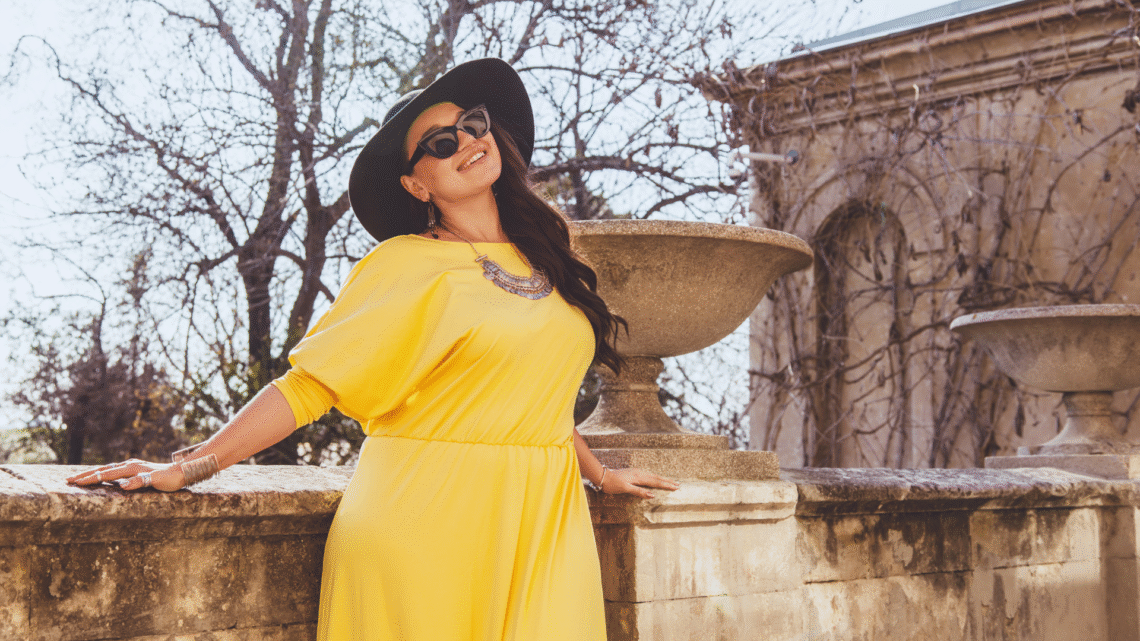
The Psychology of Dressing with Confidence: How Your Wardrobe Influences Self-Perception and Success
What a person chooses to wear can significantly influence their confidence levels. Research highlights that clothing can affect one’s mindset and behavior, a concept known as enclothed cognition. By understanding the psychological effects of fashion, individuals can leverage their wardrobe to boost self-esteem and enhance their overall presence.
Confidence is often tied to how a person feels in their clothing. When someone dresses in a way that aligns with their identity and values, it tends to foster a positive self-image. This connection between psychology and fashion underscores the importance of personal style choices in shaping one’s confidence. Feeling good about one’s body is another important component. For instance, individuals might look to address physical concerns through procedures like a tummy tuck or a Breast Revision Denver, or in a location nearby, to correct prior augmentations, both of which can enhance body confidence and self-perception.
Surgeons who prioritize individualized plans and natural-looking outcomes can help patients feel more comfortable and authentic in their clothing choices, from fitted dresses to form-fitting workwear. For readers exploring options, a local specialist who emphasizes safety and tailored results can clarify how procedures will interact with posture, proportions, and wardrobe fit — practical considerations that often influence decision-making. For example, plastic surgeons can discuss realistic expectations for recovery, scarring, and how garments may accommodate or enhance postoperative contours. If you’re researching reputable providers in the region, resources such as Dr Mihail Climov who provides Plastic Surgery Texas services, outline surgeon credentials and procedure overviews that help inform thoughtful choices. This kind of guidance connects the psychological benefits of dressing well with tangible steps toward improved body confidence.
Beyond tailoring surgical plans, modern visualization and skin-rejuvenation tools help patients set realistic expectations for how procedures will affect their silhouette and clothing fit. Practices that pair individualized planning with Vectra-style 3D imaging and advanced resurfacing—such as Diamond Glow—allow patients to preview contours and skin improvements ahead of surgery. For those considering body contouring procedures, exploring options in established markets for Plastic Surgery Atlanta, GA (or another local area) can provide access to practices with comprehensive imaging technology and proven safety protocols. This practical insight often clarifies choices around tummy tucks, breast revisions, or minor contouring, helping wardrobe decisions feel less uncertain and grounding style goals in clinical planning.
Beyond surgical interventions, many people find that targeted cosmetic treatments also help them feel more at ease in certain clothing styles. Reducing unwanted hair can lessen irritation under tight fabrics and create a smoother silhouette for swimwear or tailored pieces, which complements the adjustments made by surgery. Practical guides that list common treatment zones are useful when weighing options; for instance, this overview of laser hair removal body areas explains typical sites treated and what to expect during recovery. Considering these non-surgical choices alongside surgical planning gives readers a more complete approach to achieving comfort and confidence in their wardrobe.
The impact of dressing well extends beyond mere aesthetics; it can affect social interactions and personal performance. Recognizing how attire influences both perception and self-perception allows individuals to harness this power for greater self-assurance in various aspects of life.
The Psychology Behind Clothing Choices
Dressing choices have significant psychological implications that influence perception, self-confidence, and social interactions. Factors such as the type of clothing, color, and overall presentation play essential roles in how individuals are viewed and how they feel about themselves.
Enclothed Cognition and Its Impact
Enclothed cognition refers to how clothing affects the wearer’s psychological processes. Research indicates that the way one dresses can enhance confidence levels and alter perceptions of competence. For example, wearing professional attire often leads to increased cognitive performance and focus.
When individuals select clothing that aligns with their self-image, they often exhibit greater self-esteem. This correlation highlights that clothing is not just fabric but a powerful psychological tool.
Color Psychology and Dressing
Colors greatly influence emotions and perceptions. For instance, bright colors like red can evoke feelings of power and confidence. In contrast, softer tones may create a sense of calm or approachability.
Choosing the appropriate color can enhance how individuals are perceived by others. For example, blue is often seen as trustworthy and dependable, making it a popular choice for professional environments.
In summary, understanding color psychology allows individuals to make informed clothing choices that resonate with their desired image.
Dressing for Success and Professionalism
Professional attire plays a crucial role in establishing credibility. Dressing appropriately for the workplace can positively influence how colleagues and clients perceive one’s capabilities.
A well-fitting suit or dress can convey authority and competence. When dressed professionally, individuals report feeling more empowered and engaged in their work.
This impact underscores the importance of dressing strategically to enhance professional interactions and foster career advancement.
Building a Confident Wardrobe
A confident wardrobe consists of pieces that reflect personal style and encourage self-assurance. Making intentional wardrobe choices can significantly impact how one feels and presents themselves. Here are key aspects that contribute to building such a wardrobe.
Establishing a Personal Style
Developing a personal style involves identifying what resonates most with an individual’s identity. This may include exploring colors, patterns, and fits that enhance their appearance and comfort.
Steps to define personal style:
- Self-Reflection: Consider lifestyle, preferences, and influences.
- Inspiration Sources: Gather ideas from fashion magazines, social media, or personal icons.
- Experimentation: Try different styles and keep track of what feels best.
This process helps in curating outfits that reflect true self-expression, which is crucial for dressing with confidence.
Importance of a Capsule Wardrobe
A capsule wardrobe is a collection of versatile, essential pieces that can be mixed and matched. This concept simplifies daily choices, reducing decision fatigue while ensuring stylish outfits.
Benefits include:
- Simplicity: Fewer choices make getting dressed easier.
- Versatility: Focal pieces that can be styled in several ways maximize usage.
- Quality over Quantity: Investing in key items that last promotes a refined aesthetic.
By focusing on quality pieces, individuals can enhance their wardrobe while presenting a polished image.
Leveraging a Personal Stylist
Engaging a personal stylist can be an effective way to elevate one’s wardrobe. A stylist brings expertise in selecting pieces that suit individual body types, preferences, and lifestyles.
Considerations for working with a stylist:
- Define Goals: Clearly communicate style aspirations and needs.
- Be Open to Feedback: A stylist offers insights that can lead to wardrobe improvement.
- Utilize Their Knowledge: Benefit from their understanding of trends and timeless pieces.
Using a stylist’s help can help identify gaps in the wardrobe, allowing for more tailored choices that build confidence in one’s appearance.
Cultivating Confidence Through Dress
Dressing can significantly influence an individual’s confidence and self-esteem. The attire chosen for different situations reflects personality and can enhance feelings of assurance. This section explores how formal attire, casual clothing, and dressing for specific occasions contribute to confidence levels.
The Role of Formal Attire in Confidence
Formal attire plays a crucial role in establishing a presence. Wearing well-fitted suits, tailored dresses, or polished shoes can boost one’s self-image. This type of clothing signals professionalism and seriousness, often leading to increased respect from others.
Key Benefits of Formal Attire:
- Authority: Formal wear aligns with leadership perceptions. A structured outfit can lead to others viewing the wearer as more competent.
- Self-Perception: When individuals dress formally, they often feel more focused and motivated. This mental shift can improve performance in professional scenarios.
Thus, formal clothing can serve as an external motivator, enhancing one’s confidence while navigating various environments.
Casual Clothing and Self-Assurance
Casual clothing has its own significant impact on confidence. Comfortable and stylish pieces like fitted jeans or fashionable sneakers allow wearers to express their personality without constraint.
Benefits of Casual Attire:
- Self-Expression: Casual outfits can reflect individual tastes and creativity. This form of self-expression fosters comfort in one’s skin.
- Relaxed Mindset: Clothing that feels good often leads to a more relaxed demeanor. This comfort establishes a foundation for confidence in social settings.
Individuals wearing casual yet stylish apparel often report feeling more themselves, which can enhance interactions and overall self-assurance.
Dressing for the Occasion
Dressing appropriately for different occasions is vital for confidence. Understanding context, whether for a formal event, business meeting, or casual gathering, helps individuals make informed wardrobe choices.
Considerations for Dressing for Occasions:
- Suitability: Choosing outfits that match the event’s tone shows awareness and respect. This can positively impact perceptions from peers.
- Preparation: Anticipating dressing needs for various situations empowers individuals. With the right attire chosen, anxiety about appearance diminishes.
Emphasizing the importance of context encourages a proactive dressing approach, enabling individuals to navigate their environments confidently.




